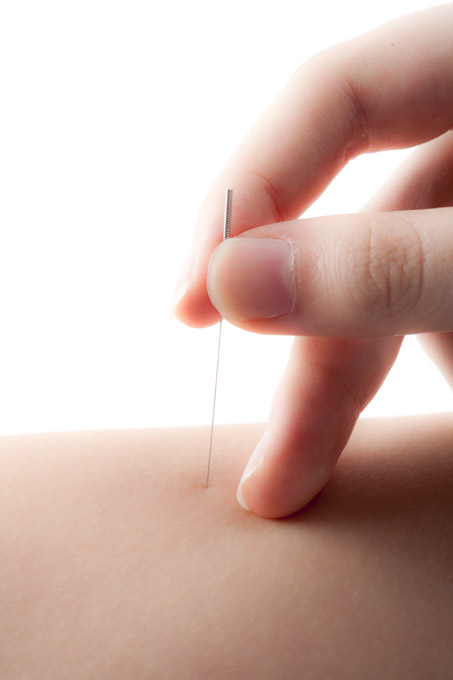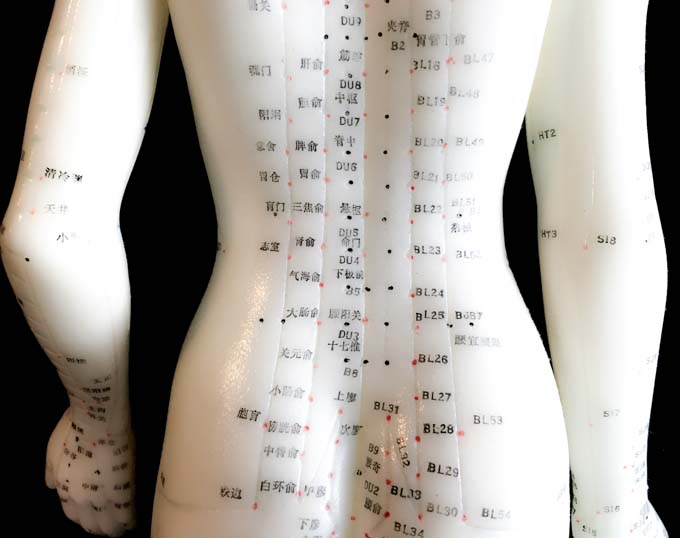Researchers find acupuncture and moxibustion effective for clearing acne in patients with the Traditional Chinese Medicine diagnosis of yin deficiency.
Acupuncture and moxibustion clear acne, however, moxibustion demonstrated superior patient outcomes. Using a protocol implemented by Zhang et al., moxibustion produced a 90% total effective rate and acupuncture produced an 83.3% total effective rate. Participants demonstrating significant improvements did not relapse, measured at four weeks after completion of treatments.

Acupuncture and moxibustion are effective treatment modalities for acne sufferers. Zhang et al. conducted a clinical trial to determine the efficaciousness of acupuncture and moxibustion for the treatment of acne due to yin deficiency with internal heat. While both modalities produced positive patient outcomes, moxibustion was slightly more effective than acupuncture for the treatment of this particular class of acne.
In Traditional Chinese Medicine (TCM), acne due to yin deficiency with internal heat has a complex pathology. It is a result of many different types of bodily imbalances. Symptomatic presentations of this disorder appear as excess conditions involving toxins, damp-heat, etc… However, the root of the condition is yin deficiency leading to internal heat. As a result, this type of acne is often pernicious and insidious.
Zhang et al. comment that according to TCM principles, the treatment of acne due to yin deficiency with internal heat focuses on nourishing the root of deficiency and clearing excess heat. To bring a yin deficient bodily state to a yin and yang balanced state, effective medical treatments often follow these principles: facilitate the balance of yin and yang, promote circulation, improve internal organ health, release heat and toxins from the body.

In this study, acne patients who received acupuncture treatment had an 83.33% total treatment effective rate. Participants receiving moxibustion treatment had a 90% total treatment effective rate. In both groups, patients demonstrating significant improvements in acne did not experience a relapse of the condition in the four week window after completion of treatment.
A total of 66 patients with acne due to yin deficiency and internal heat participated in this study. They were randomly divided into two groups: acupuncture group, moxibustion group. Each group received only acupuncture or moxibustion therapy respectively. Due to external factors, 6 patients were eventually disqualified from the study, therefore, the final results were tabulated from a total of 60 patients. The acupoints selected for both moxibustion and acupuncture were identical:
- Shenque (CV8)
- Qihai (CV6)
- Guanyuan (CV4)
- Shenshu (BL23)
Both groups underwent the same preparation procedures before starting their respective treatments. Firstly, the affected areas were disinfected. For each pustule, a disposable needle was used to gently pierce the pustule and release the pus. Disinfection was performed again after removal. Thereafter, each group underwent their respective treatments.
For the moxibustion group, edible grade salt was spread on the selected acupoints. Next, a slice of raw ginger (with a hole pierced in the center) was placed over the salt. Subsequently, 20 g of conical moxa was placed on top of the raw ginger slice and lit. Each acupoint was treated with a grand total of 60 g of moxa, 5 minutes per each 20 g dose. Throughout the treatment, consistent checks were made with the patients to ensure that they felt warmth at the acupoints, but not excessive heat. Moxibustion treatment was conducted twice per week, on Monday and Friday. One treatment cycle consisted of four consecutive weeks. The entire treatment course was comprised of three treatment cycles.
For the acupuncture group, a 0.30 x 25 mm disposable filiform needle was perpendicularly inserted (after disinfection) into each acupoint until a deqi effect was achieved. Standard insertion depths of the acupoints were followed with one exception, the Shenque (CV8) acupoint was pierced up to a 3–5 mm depth. Normally, this acupoint is contraindicated for needling. A total needle retention time of 30 minutes was observed. The acupuncturist applied the reinforcement manipulation technique every 10 minutes. Acupuncture treatments were conducted twice per week, on Monday and Friday. Identical to the moxibustion protocol, one treatment cycle consisted of four consecutive weeks. The entire treatment course was comprised of three treatment cycles.
The total treatment effective rate was assessed according to skin improvements and changes in yin deficiency patterns. Yin deficiency improvements were evaluated by changes in the clinical presentation of symptoms. Skin improvements were categorized into 4 tiers:
- Recovery: >90% reduction in acne, or only pigmentation change observed
- Significantly effective: 60%–89% reduction in acne
- Effective: 30%–59% reduction in acne
- Not effective: <30% reduction in acne, or condition worsened
Zhang et al. conclude that both acupuncture and moxibustion are effective in treating acne due to yin deficiency with internal heat. Moxibustion outperformed acupuncture in this clinical protocol. Based on the findings, further research is warranted.
References:
Zhang XP, Tong YN, Xue D, Li M, Fu JY. (2013). Clinical Research on “Yin-deficiency with internal heat” Acne Treatment Using Acupuncture and Moxibustion. World Science and Technology-Modernization of Traditional Chinese Medicine. 15(6).
Zhang XP, Li M, Xue D, et al. (2012). Acupuncture and Moxibustion in treating Yin deficiency diseases. Journal of Shanghai University of Traditional Chinese Medicine. 26(6):30-32.
Zhang SJ. (2008). Moxibustion in treating terminal illnesses. China Journal of Acupuncture and Moxibustion. 28(10):739–741.


